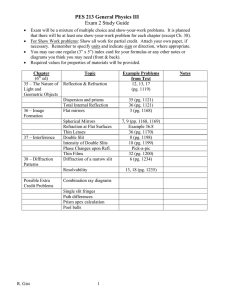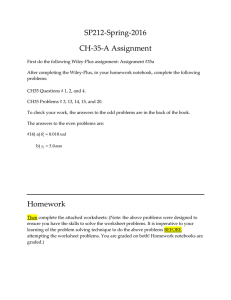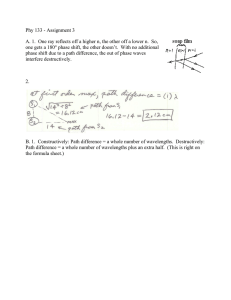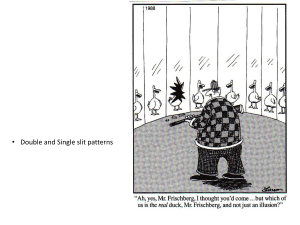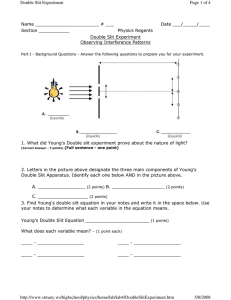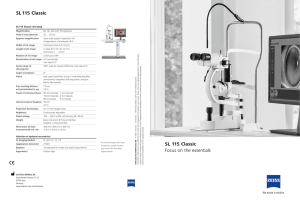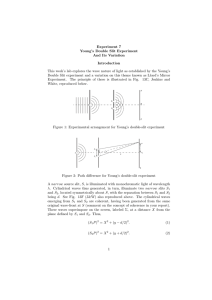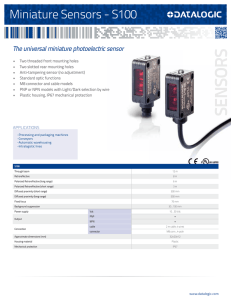Quiz # 10
advertisement
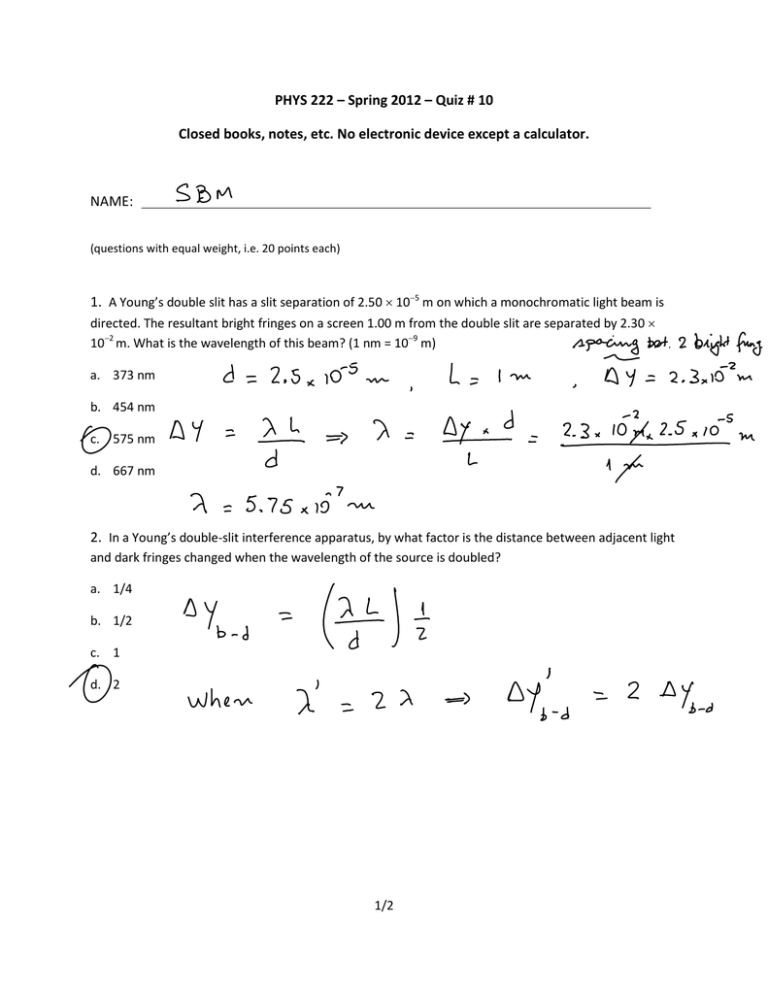
PHYS 222 – Spring 2012 – Quiz # 10 Closed books, notes, etc. No electronic device except a calculator. NAME: (questions with equal weight, i.e. 20 points each) 1. A Young’s double slit has a slit separation of 2.50 105 m on which a monochromatic light beam is directed. The resultant bright fringes on a screen 1.00 m from the double slit are separated by 2.30 102 m. What is the wavelength of this beam? (1 nm = 109 m) a. 373 nm b. 454 nm c. 575 nm d. 667 nm 2. In a Young’s double‐slit interference apparatus, by what factor is the distance between adjacent light and dark fringes changed when the wavelength of the source is doubled? a. 1/4 b. 1/2 c. 1 d. 2 1/2 3. Two beams of coherent light are shining on the same piece of white paper. With respect to the crests and troughs of such waves, darkness will occur on the paper where: a. the crest from one wave overlaps with the crest from the other. b. the crest from one wave overlaps with the trough from the other. c. the troughs from both waves overlap. d. darkness cannot occur as the two waves are coherent. 4. Light of wavelength 540 nm is incident on a slit of width 0.150 mm, and a diffraction pattern is produced on a screen that is 2.00 m from the slit. What is the width of the central bright fringe? (1 nm = 109 m) a. 0.720 cm b. 1.44 cm c. 1.76 cm d. 2.16 cm 5. A multiple slit diffraction grating has a slit separation of 2.00 106 m. Find the wavelength of the monochromatic light that will have its second order bright fringe diffracted through an angle of 38.0°. (1 nm = 109 m) a. 120 nm b. 500 nm c. 616 nm d. 687 nm 2/2


